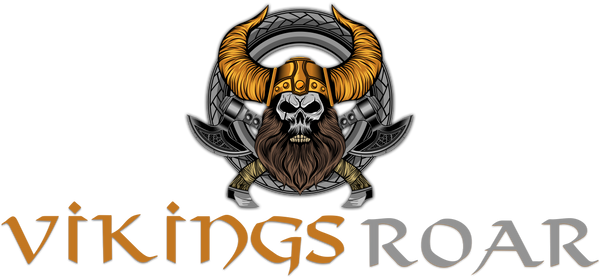
The Secret History of the Vikings
Share
The Viking Age did not last very long. At least not very long in comparison to other civilizations. Regardless whether the Viking Age lasted long or not, the explorers still capture our imagination today.
The Vikings had the freedom and strength we like in our heroes today. They were bold and fearless; they were certainly violent but so was everyone else at the time.
Regardless of their well-documented spirit of adventure, warrior culture and advanced shipbuilding capabilities, the Vikings still have their secrets. Questions remain about how they lived, where they traveled, what they looked like and who they really were.
Now, like ship captains setting sail to untouched shores, scientists are exploring a new age of Viking research. On this adventure, DNA is their map.
Genetic studies have made stunning claims recently, ranging from who’s buried in a famous Viking grave to just how far across the Atlantic Ocean the Vikings may have traveled. Even more research is underway, though results may disappoint anyone expecting tidy answers.
“Viking is not a genetic term,” says University of Bergen geneticist Ellen Røyrvik, who was part of a landmark 2015 genetic study of populations in the British Isles. “It’s a cultural and historical label we’ve given them.”
DNA research suggests that there's no single Viking Identity. Vikings from Denmark, Norway and Sweden each had different genetic signature. The genes further evolved as Vikings settled in Iceland and mixed with populations in Ireland, the British Isles and other regions in Europe.
DNA can, however, give us details we would otherwise never learn. For example, in contrast to well-known boat burials, in which high-status individuals were laid to rest in a hull with lavish grave goods, animals and even slaves, “DNA can give you a picture of more average people, who wouldn’t have been able to afford the richest burials,” says Røyrvik. “It can provide a real cross section of a population.
“But you won’t get as much as people want from DNA,” she cautions. “All it does is give you someone’s biological identity.” And even that can raise more questions than it answers.
The word Viking comes from the Scandinavian term ‘vikingr’ meaning ‘pirate.’
The Viking Age generally refers to the period from 800 CE, a few years after the earliest recorded raid, until the 1050s, a few years before the Norman Conquest of England in 1066.
The Vikings changed the political and genetic course of Europe and beyond: Cnut the Great became the King of England, Leif Eriksson is believed to have been the first European to reach North America — 500 years before Christopher Columbus — and Olaf Tryggvason is credited with taking Christianity to Norway.
Many expeditions involved raiding monasteries and cities along the coastal settlements of Europe but the goal of trading goods like fur, tusks and seal fat were often the more pragmatic aim.
“We didn’t know genetically what they actually looked like until now,” said lead author Professor Eske Willerslev, a researcher at the University of Cambridge and director of the University of Copenhagen’s Lundbeck Foundation GeoGenetics Centre.
“We found genetic differences between different Viking populations within Scandinavia which shows Viking groups in the region were far more isolated than previously believed.”
“Our research even debunks the modern image of Vikings with blonde hair as many had brown hair and were influenced by genetic influx from the outside of Scandinavia.”
Professor Willerslev and colleagues sequenced the whole genomes of 442 mostly Viking Age men, women, children and babies.
The researchers analyzed DNA from the remains from a boat burial in Estonia and discovered four Viking brothers died the same day.
They also revealed that male skeletons from a Viking burial site in Orkney, Scotland, were not actually genetically Vikings despite being buried with swords and other Viking memorabilia.
There wasn’t a word for Scandinavia during the Viking Age — that came later. But the study shows that the Vikings from what is now Norway traveled to Ireland, Scotland, Iceland and Greenland.
The Vikings from what is now Denmark traveled to England. And Vikings from what is now Sweden went to the Baltic countries on their all male ‘raiding parties.’
“We carried out the largest ever DNA analysis of Viking remains to explore how they fit into the genetic picture of ancient Europeans before the Viking Age,” said first author Dr. Ashot Margaryan, a researcher in the Section for Evolutionary Genomics in the Globe Institute at the University of Copenhagen.
“The results were startling and some answer long-standing historical questions and confirm previous assumptions that lacked evidence.”
“We determined that a Viking raiding party expedition included close family members as we discovered four brothers in one boat burial in Estonia who died the same day. The rest of the occupants of the boat were genetically similar suggesting that they all likely came from a small town or village somewhere in Sweden.”
The scientists also found genetically Pictish people ‘became’ Vikings without genetically mixing with Scandinavians.
The Picts were Celtic-speaking people who lived in what is today eastern and northern Scotland during the Late British Iron Age and Early Medieval periods.
“Scandinavian diasporas established trade and settlement stretching from the American continent to the Asian steppe,” said Professor Søren Sindbæk, an archaeologist at Moesgaard Museum.
“They exported ideas, technologies, language, beliefs and practices and developed new socio-political structures.”
“Importantly our results show that ‘Viking’ identity was not limited to people with Scandinavian genetic ancestry.”
The genetic legacy of the Viking Age lives on today with 6% of people of the UK population predicted to have Viking DNA in their genes compared to 10% in Sweden.
“The results change the perception of who a Viking actually was. The history books will need to be updated,” Professor Willerslev concluded.
The findings were published in the journal Nature.
_____
A. Margaryan et al. 2020. Population genomics of the Viking world. Nature 585, 390-396; doi: 10.1038/s41586-020-2688-8
